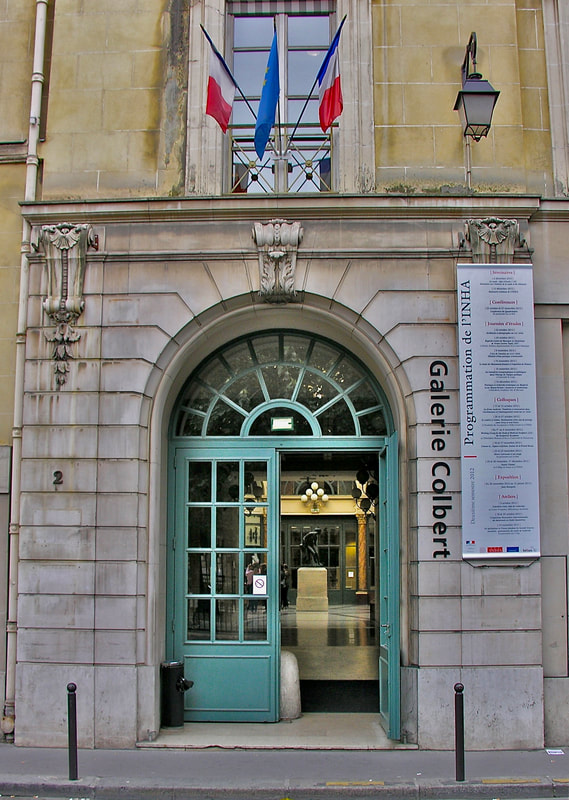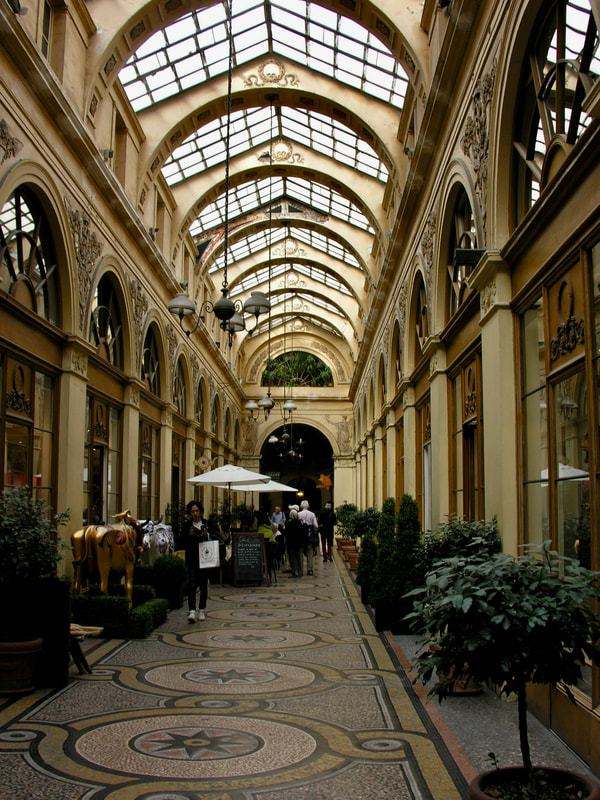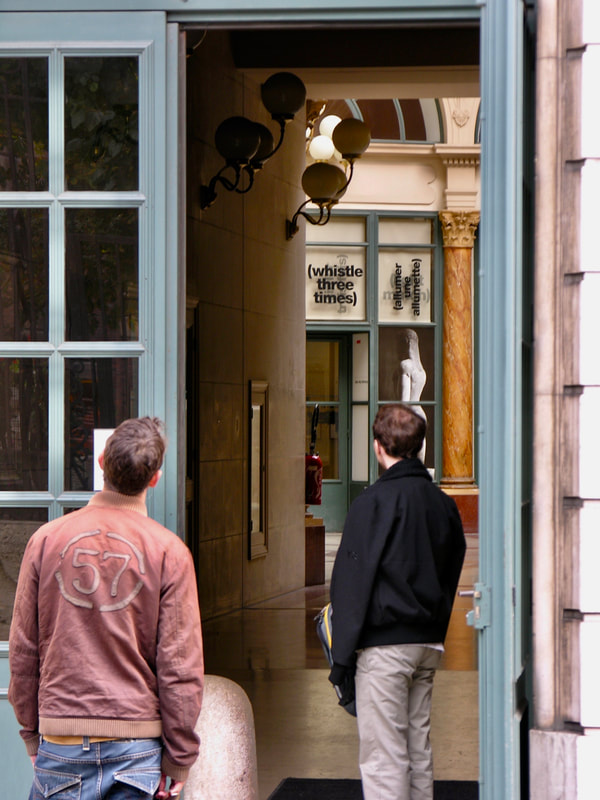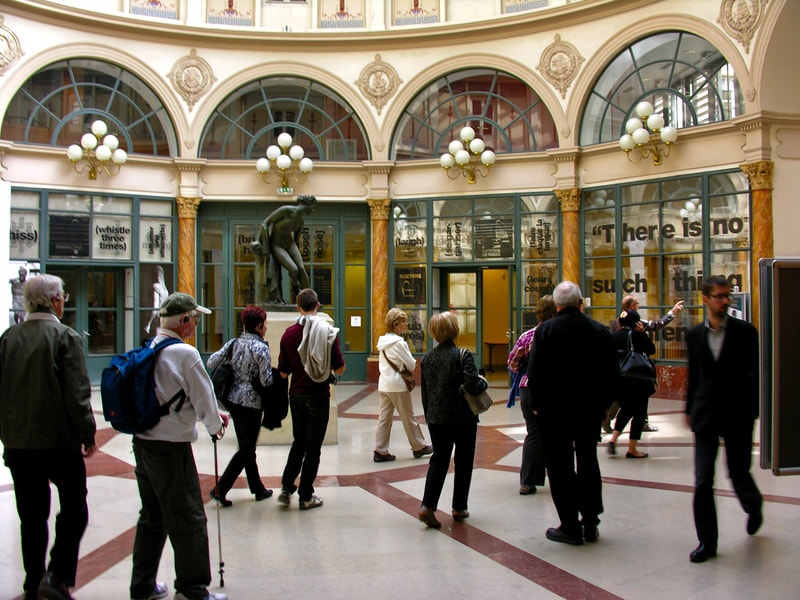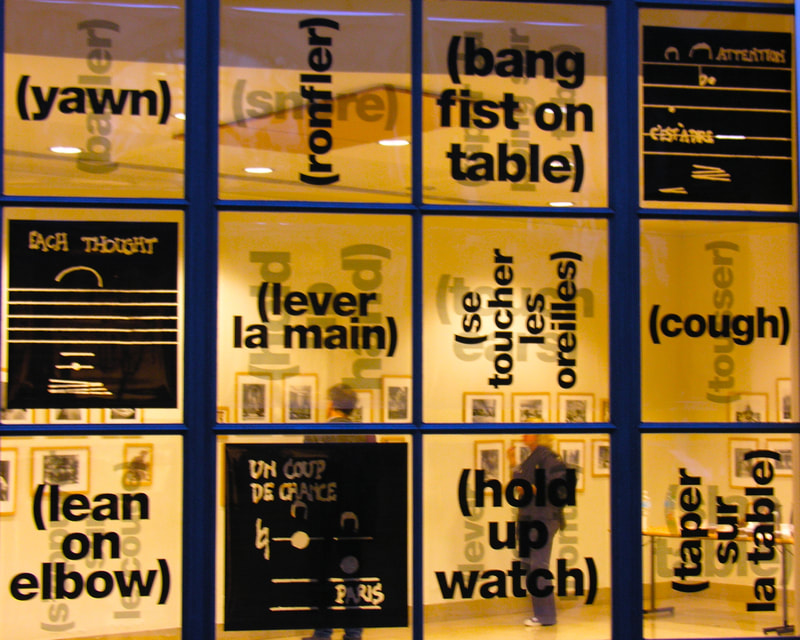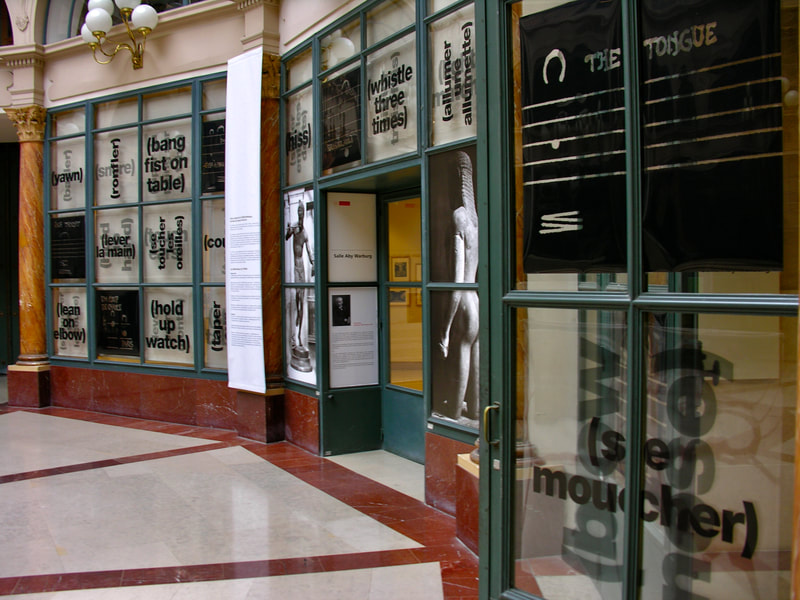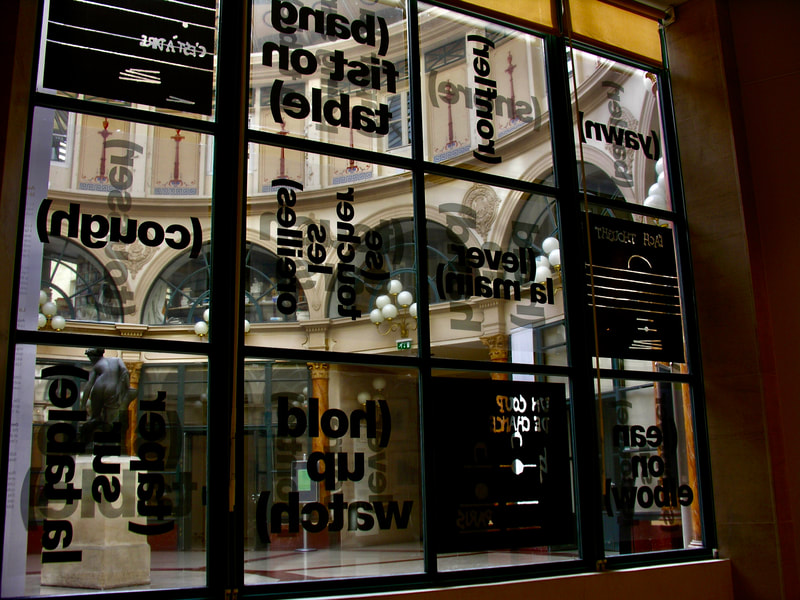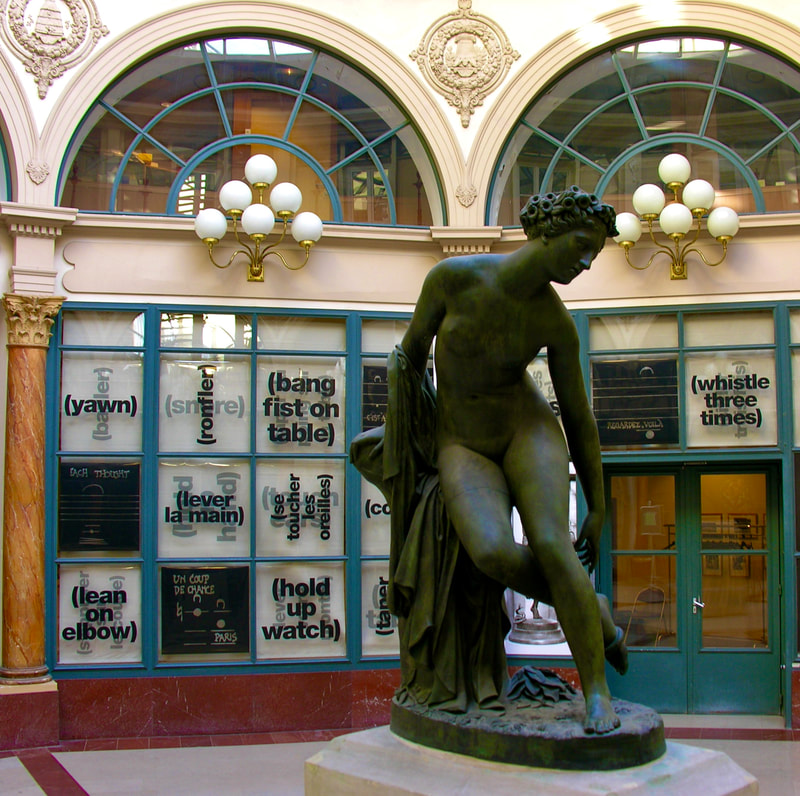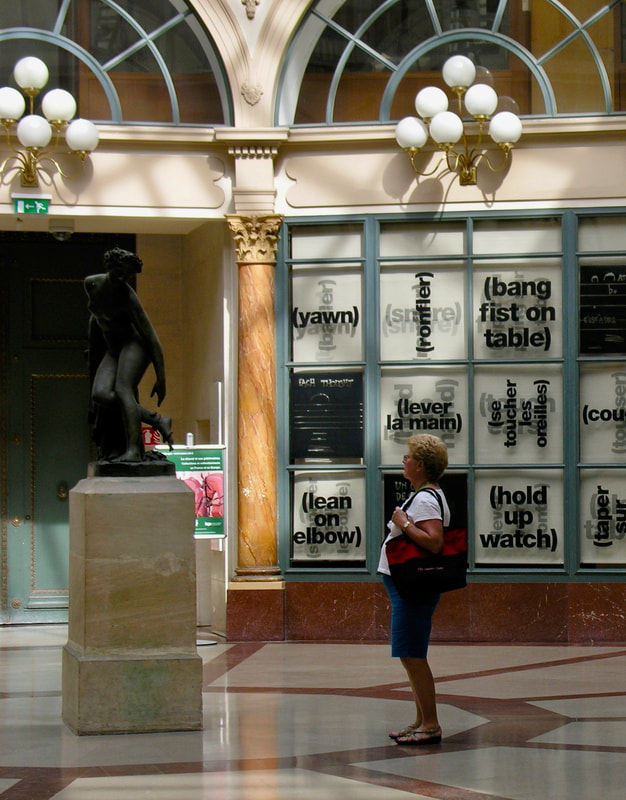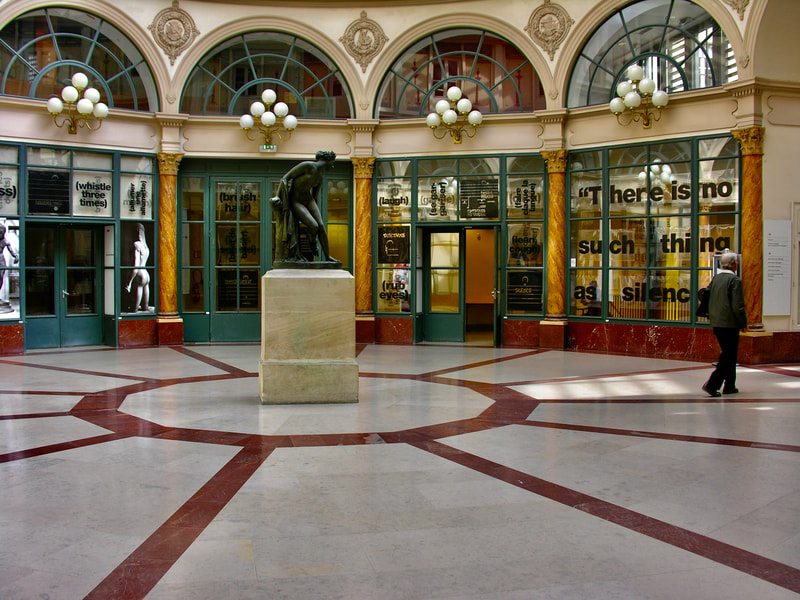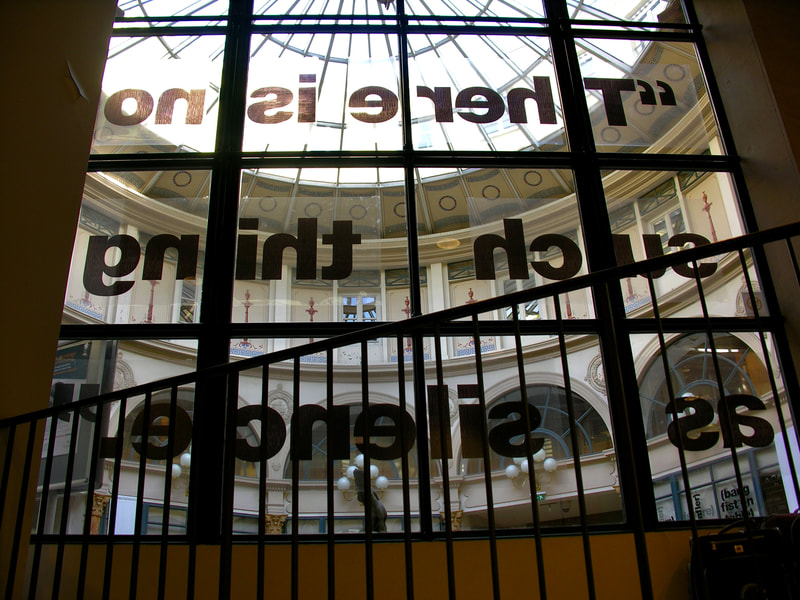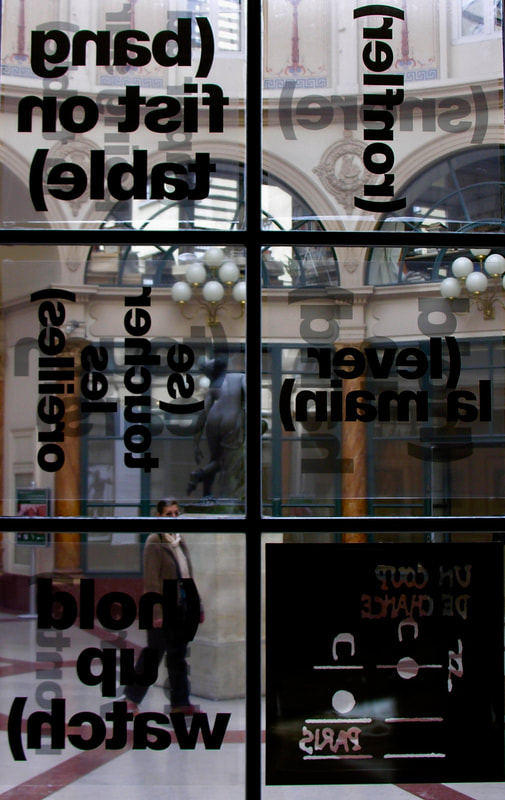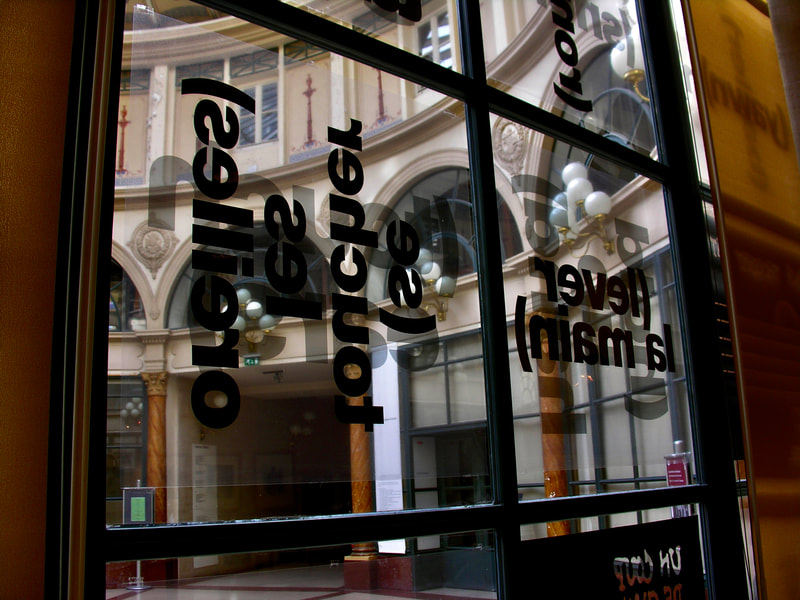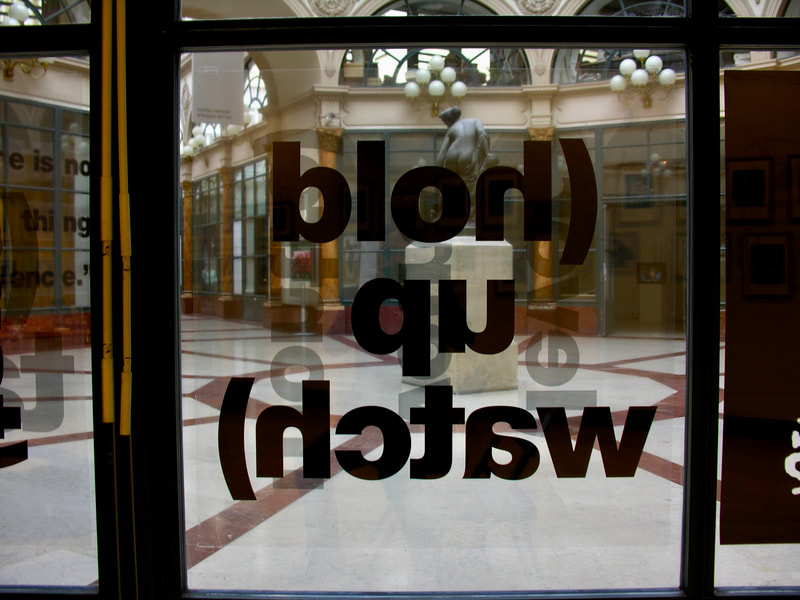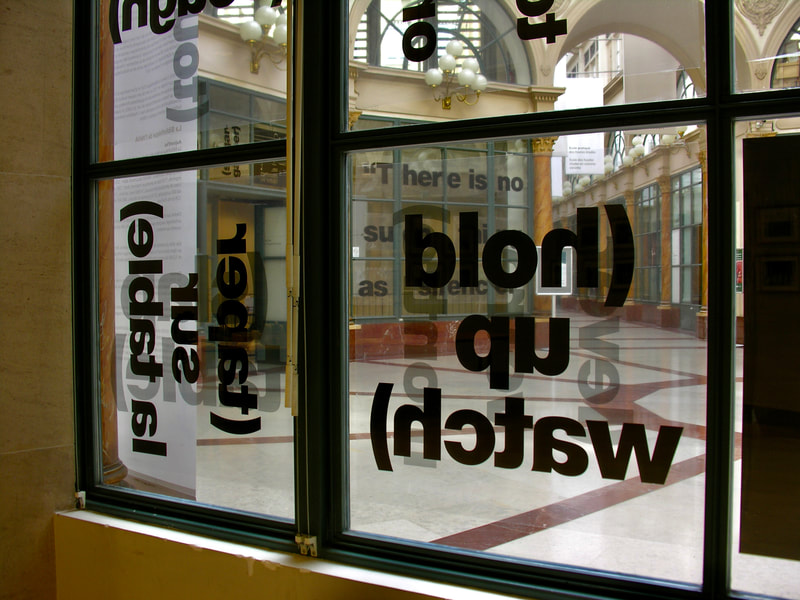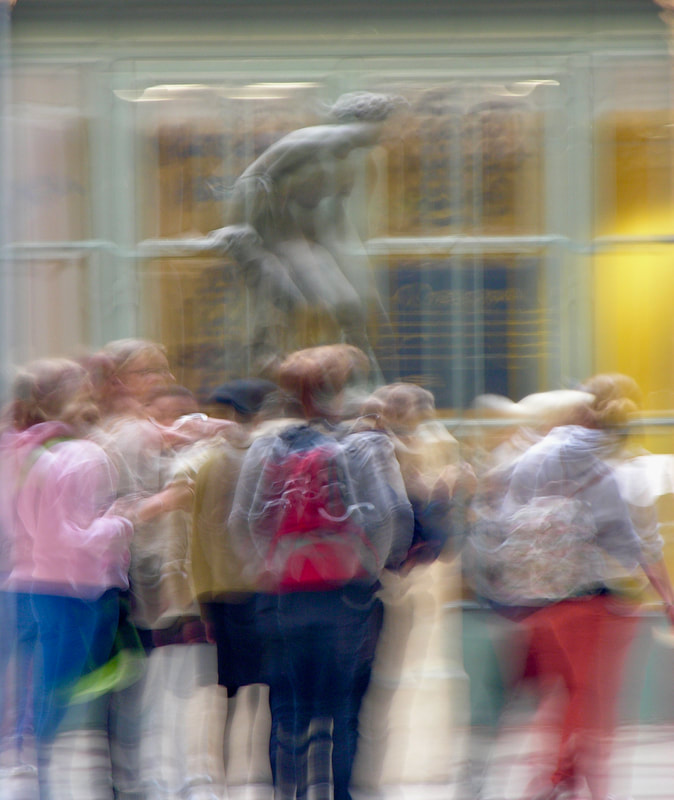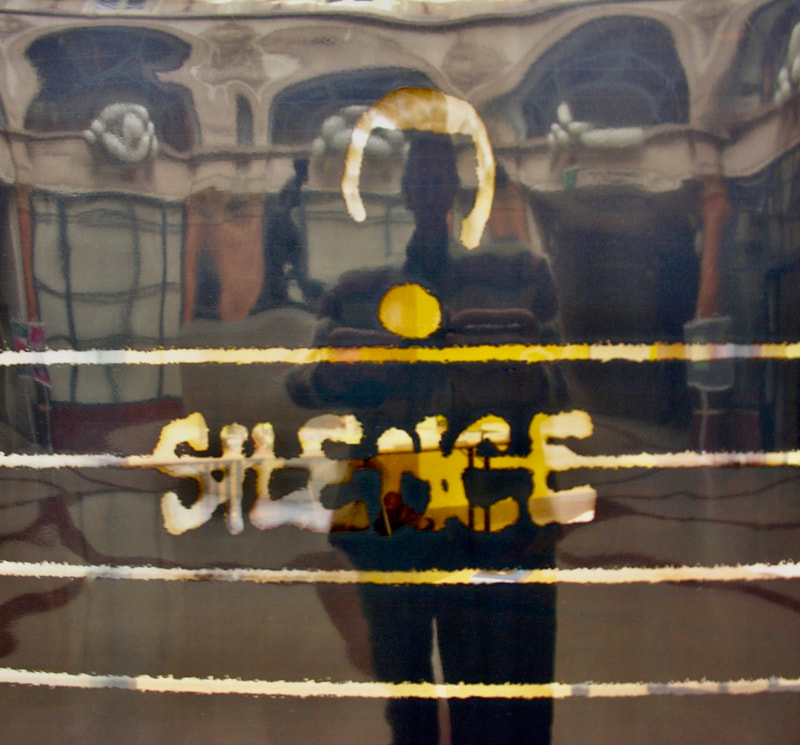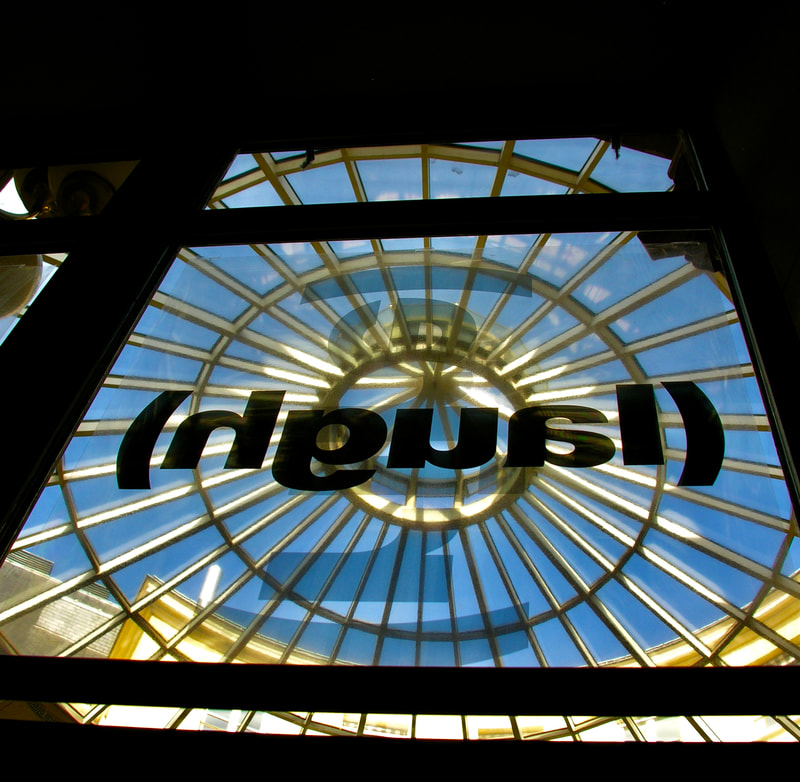IN ONE EAR & OUT THE OTHER
"Transatlantic Cage: John Cage's Centennial in Paris"
Université Sorbonne Nouvelle Paris 3
September 19-22, 2012
Galerie Colbert
Paris, France
(scroll down for a related sound file)
Writing through John Cage's “Song Books: Solos for Voice” (musical notations) and, from Silence,
“45’ for a Speaker” (stage directions)
“45’ for a Speaker” (stage directions)
At the center of the grand rotunda of Paris’ Galerie Colbert stands a statue of Eurydice, soon to die, a venomous snake wrapped about her foot. In that rotunda, there is no sign of her famous lover Orpheus, the musician who would subsequently descend into the underworld, having wooed the gods with his music, pleading for his lost love’s return. In place of Orpheus, though, there was recently an unlikely substitute, another musician, the composer John Cage.
No, there was no statue of Cage, but a conference instead, “Transatlantic Cage: John Cage’s Centennial in Paris,” held there by the Université Sorbonne Nouvelle Paris 3, September 19-22. One can only wonder how the gods of the underworld would have responded to Cage’s music, and whether Eurydice would be returned to her lover by the sounds created there.
For this conference, I was asked by its organizers to complete a site-specific and short-term poetry installation that would partially surround that statue of Eurydice in the Galerie Colbert. My poetry would be composed of words placed upon many of the windows of that historic and glorious setting, a “writing on air” installation that would briefly inscribe, upon that space, varieties of language emerging directly from the work of Cage.
Yes, this was to be a site-specific installation, however, as I was in Florida, it would be designed for a site that I had not seen, never having entered the Galerie Colbert (one of Paris’ original shopping arcades from the 1820’s, where the figure of the flaneur would be born, and where, many decades later, Walter Benjamin would stroll, imagining his own Arcades Project).
From the photographs sent to me by the conference organizers, it was clear that the Galerie Colbert, in all its ornate grandeur, was an overwhelming and impressive sight to behold. One particular element, though, was lacking within that space and that was the presence of language — as if all of the filigreed architectural splendor of that rotunda was intended to silence anyone entering into it, taking your breath away.
However, taking John Cage at his word when he wrote that “There is no such thing as silence,” it occurred to me suddenly that what that great space needed — if only for a few days, and if only as a brief marker of Cage’s presence (alongside the dying Eurydice) — was language: big, bold, bilingual words cross-hatched across the space, as if dancing from window to window, superimposed onto the setting and into the air.
From a distance, then, across the Atlantic, and examining further the photographs sent to me, I designed an installation that would respond to the rotunda’s absence of words, its architectural silencing of language; my installation would therefore involve a “writing through” of John Cage's Song Books: Solos for Voice and, from his book Silence, “45’ for a Speaker.”
In the first text, the Song Books, I located a number of Cage’s more striking musical notations (which included as well a variety of curious and compelling words and phrases, such as “Un coup de chance” and “Continuous and Vanishing”), scanning his handwritten score, and then greatly enlarging those selected notations; in the second text, from Silence, I isolated a number of theatrical stage-directions that Cage had written as a part of a performed reading, directions to the reader to interrupt his lecture and, for instance, “blow your nose” or “lever la main.” The thirty selections were then printed onto large transparencies, rolled up into a tube, and transported by me across the Atlantic to the Galerie Colbert where they were then taped onto the thirty windows.
During the four days of the installation, Eurydice was (as perhaps instructed by the gods) turned away from the written windows, unseeing. But, listening, might she have been aware of Cage’s words dancing just behind her, whispering . . . . in one ear and out the other?
The subsequent installation resulted in a selection of photographs that now document that brief and fleeting event within the Galerie Colbert.
No, there was no statue of Cage, but a conference instead, “Transatlantic Cage: John Cage’s Centennial in Paris,” held there by the Université Sorbonne Nouvelle Paris 3, September 19-22. One can only wonder how the gods of the underworld would have responded to Cage’s music, and whether Eurydice would be returned to her lover by the sounds created there.
For this conference, I was asked by its organizers to complete a site-specific and short-term poetry installation that would partially surround that statue of Eurydice in the Galerie Colbert. My poetry would be composed of words placed upon many of the windows of that historic and glorious setting, a “writing on air” installation that would briefly inscribe, upon that space, varieties of language emerging directly from the work of Cage.
Yes, this was to be a site-specific installation, however, as I was in Florida, it would be designed for a site that I had not seen, never having entered the Galerie Colbert (one of Paris’ original shopping arcades from the 1820’s, where the figure of the flaneur would be born, and where, many decades later, Walter Benjamin would stroll, imagining his own Arcades Project).
From the photographs sent to me by the conference organizers, it was clear that the Galerie Colbert, in all its ornate grandeur, was an overwhelming and impressive sight to behold. One particular element, though, was lacking within that space and that was the presence of language — as if all of the filigreed architectural splendor of that rotunda was intended to silence anyone entering into it, taking your breath away.
However, taking John Cage at his word when he wrote that “There is no such thing as silence,” it occurred to me suddenly that what that great space needed — if only for a few days, and if only as a brief marker of Cage’s presence (alongside the dying Eurydice) — was language: big, bold, bilingual words cross-hatched across the space, as if dancing from window to window, superimposed onto the setting and into the air.
From a distance, then, across the Atlantic, and examining further the photographs sent to me, I designed an installation that would respond to the rotunda’s absence of words, its architectural silencing of language; my installation would therefore involve a “writing through” of John Cage's Song Books: Solos for Voice and, from his book Silence, “45’ for a Speaker.”
In the first text, the Song Books, I located a number of Cage’s more striking musical notations (which included as well a variety of curious and compelling words and phrases, such as “Un coup de chance” and “Continuous and Vanishing”), scanning his handwritten score, and then greatly enlarging those selected notations; in the second text, from Silence, I isolated a number of theatrical stage-directions that Cage had written as a part of a performed reading, directions to the reader to interrupt his lecture and, for instance, “blow your nose” or “lever la main.” The thirty selections were then printed onto large transparencies, rolled up into a tube, and transported by me across the Atlantic to the Galerie Colbert where they were then taped onto the thirty windows.
During the four days of the installation, Eurydice was (as perhaps instructed by the gods) turned away from the written windows, unseeing. But, listening, might she have been aware of Cage’s words dancing just behind her, whispering . . . . in one ear and out the other?
The subsequent installation resulted in a selection of photographs that now document that brief and fleeting event within the Galerie Colbert.
This sound piece, titled "Cage Laugh," was created for the 2012 Paris installation, with material taken from John Cage | Morton Feldman: Radio Happenings. Recorded at WBAI, New York, July 1966-January 1967. This piece was later presented at the conference “Convergence on Poetics,” at the University of Washington-Bothell, September 27-30, 2012 and subsequently at the Cullom Gallery, in Seattle, WA, as a part of the exhibition "Beat | Pattern | Filter," February 2013.
Many thanks to UNF’s Center for Instruction and Research Technology and especially Michael Boyles for his invaluable assistance with this installation.
Copyright © 2022 Clark Lunberry. All rights reserved.
